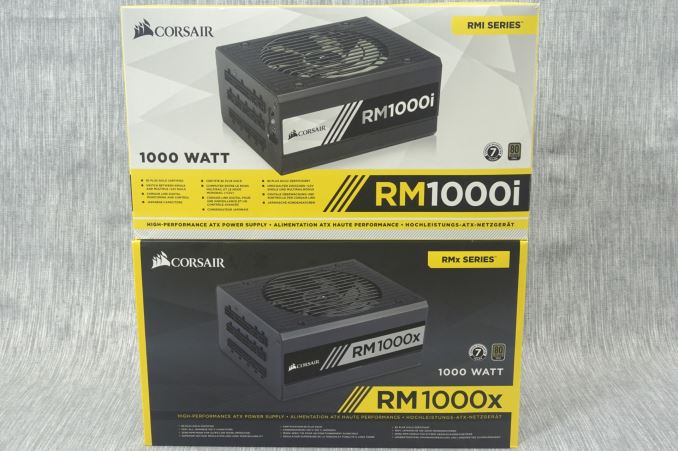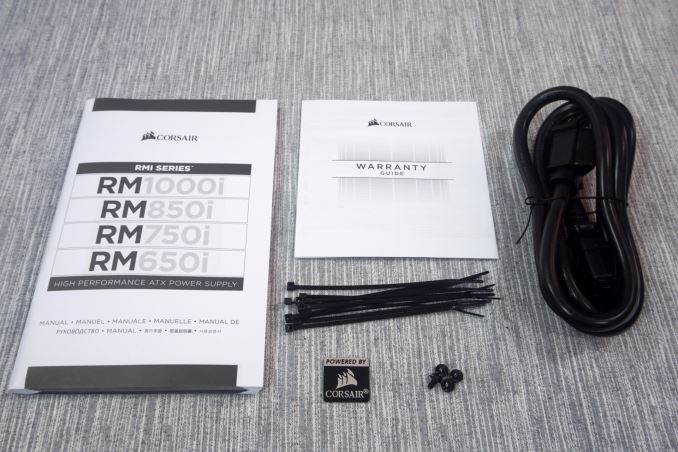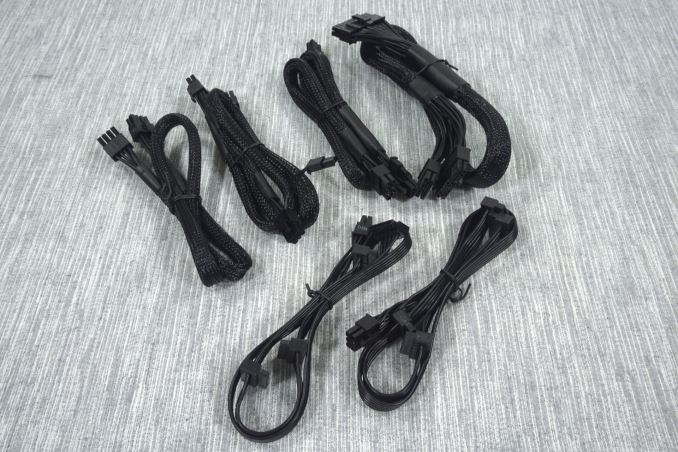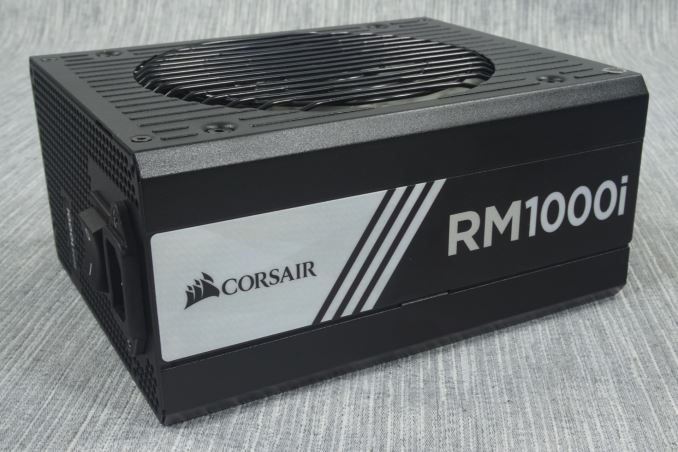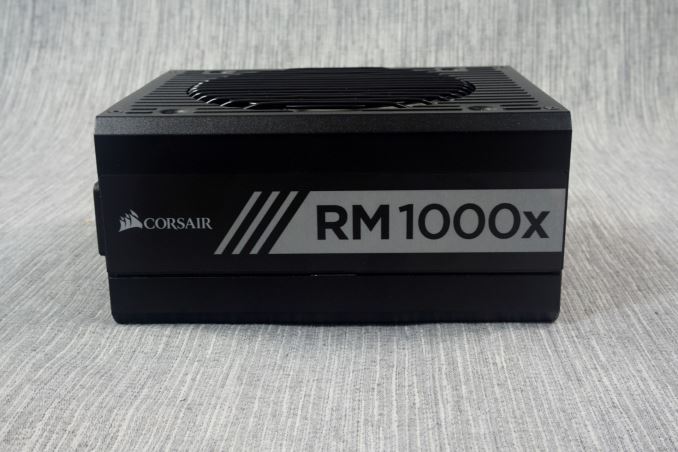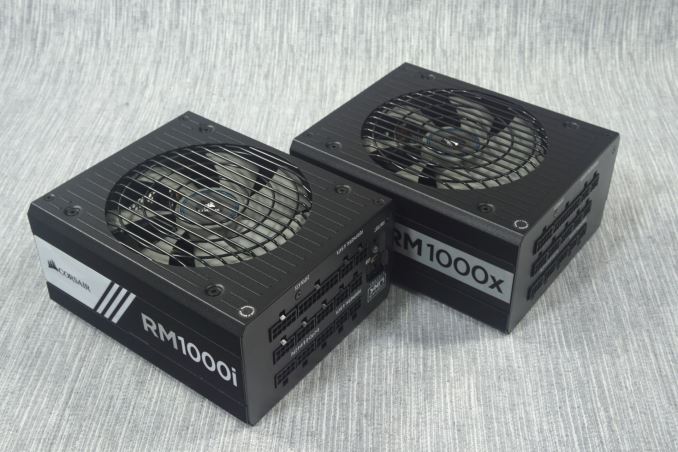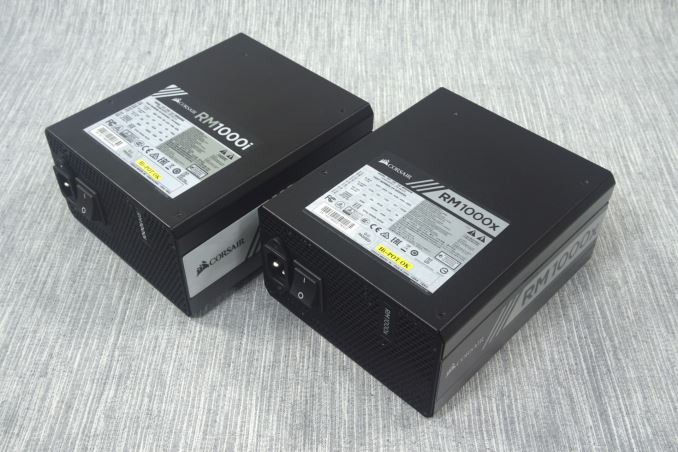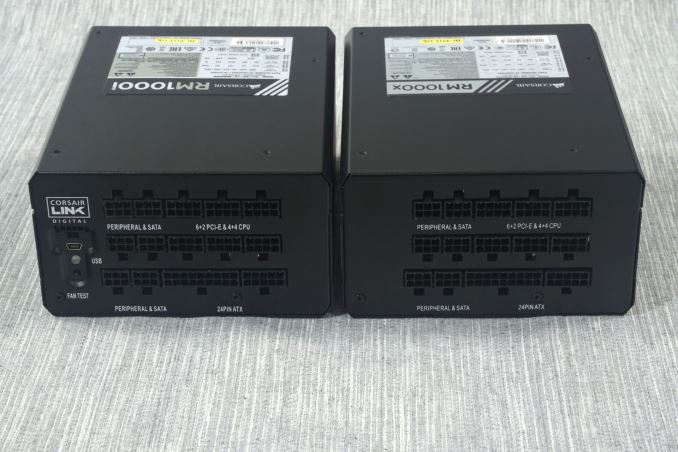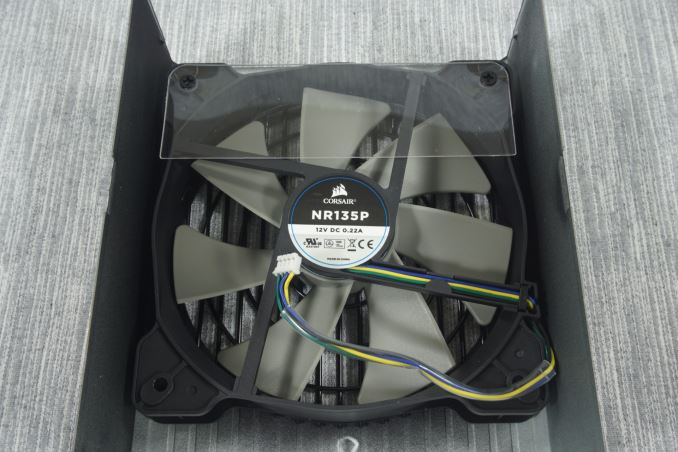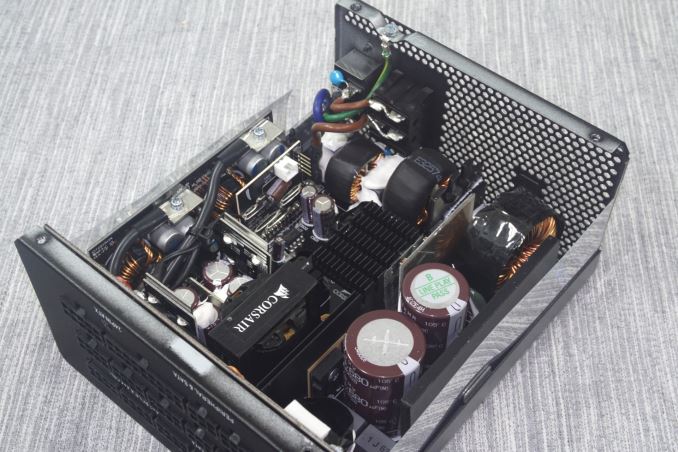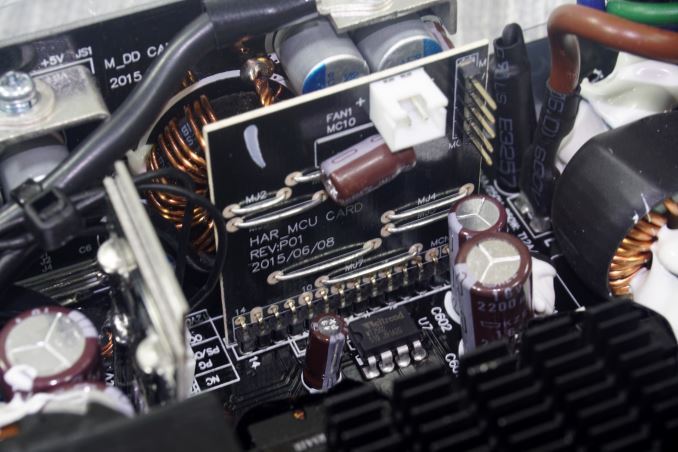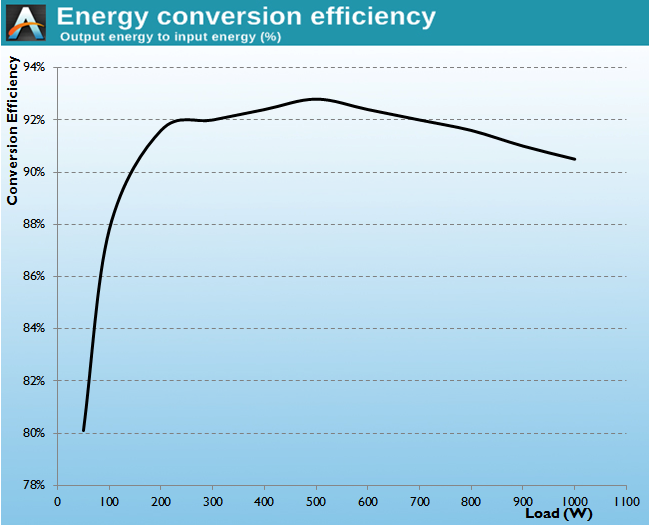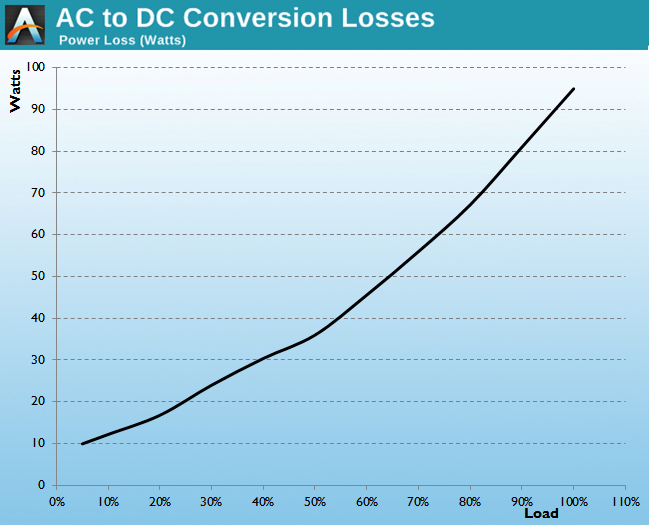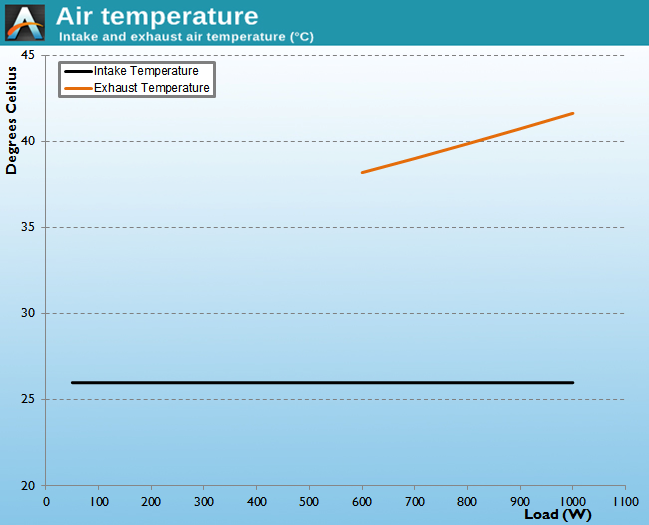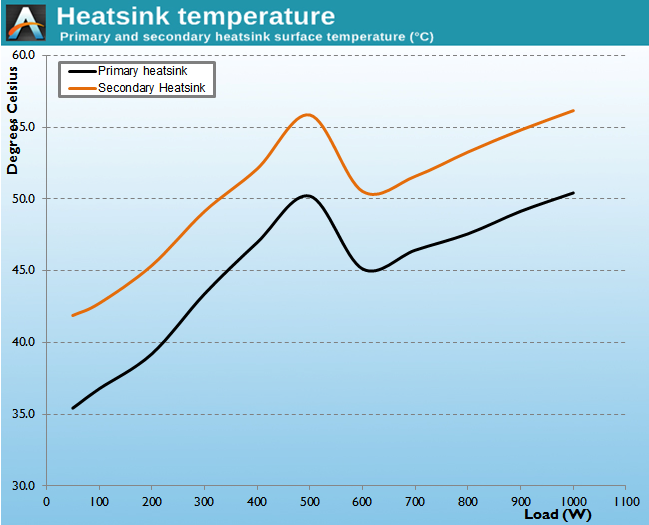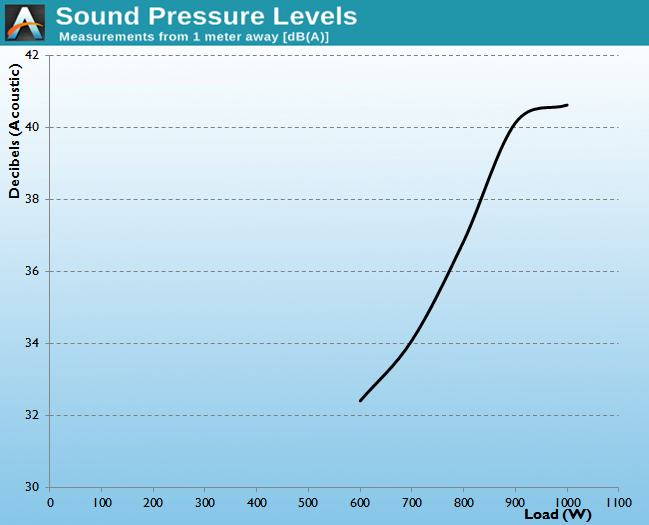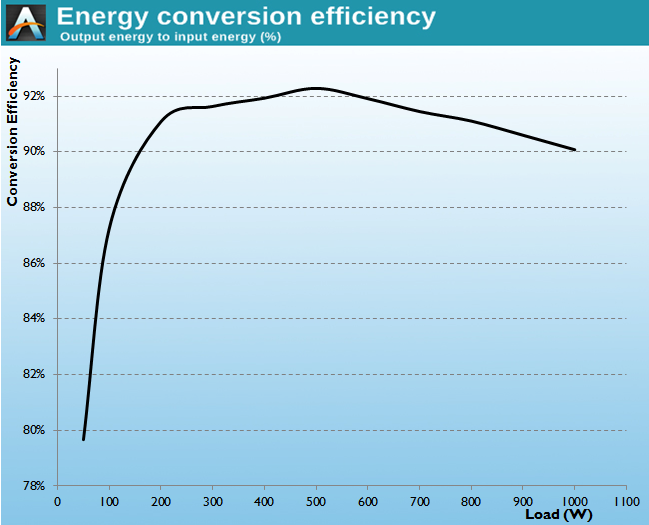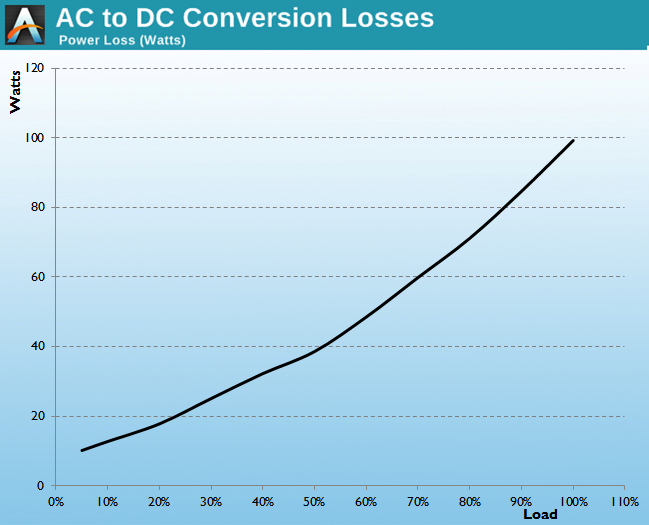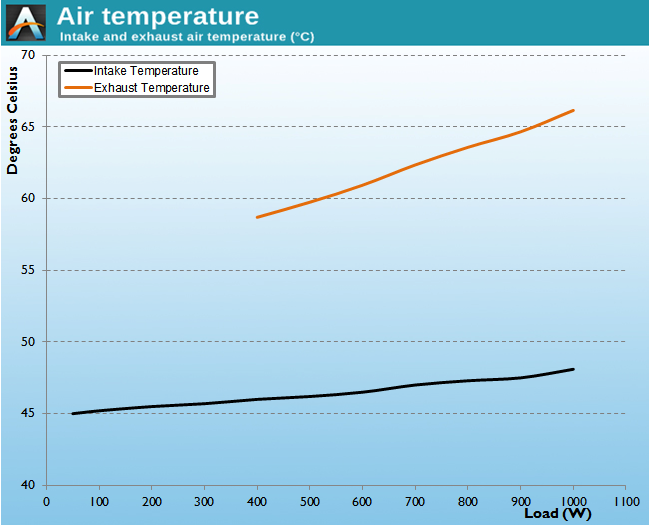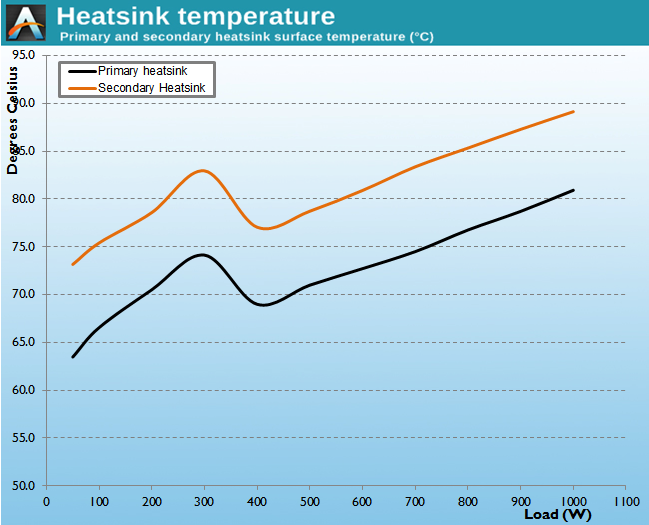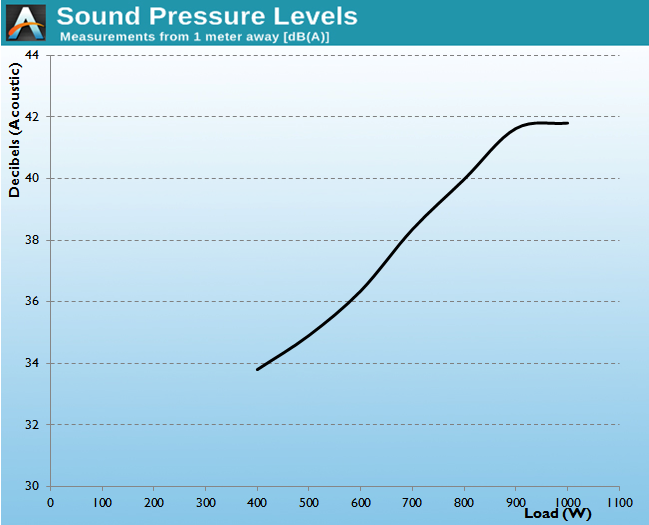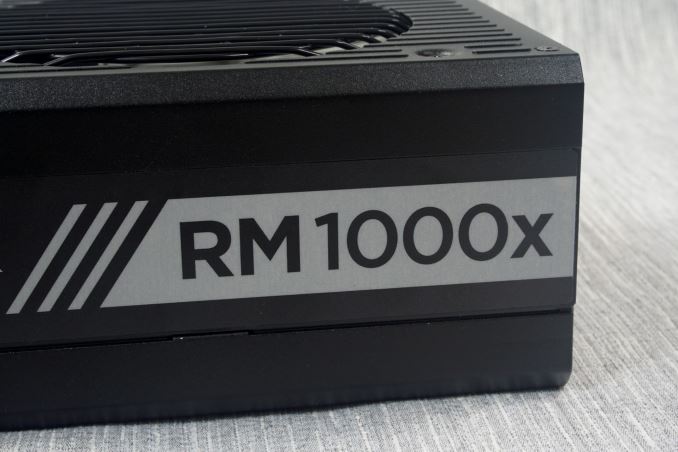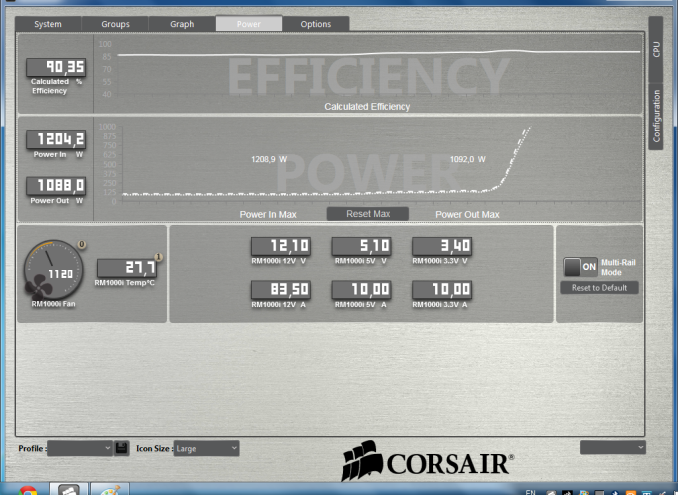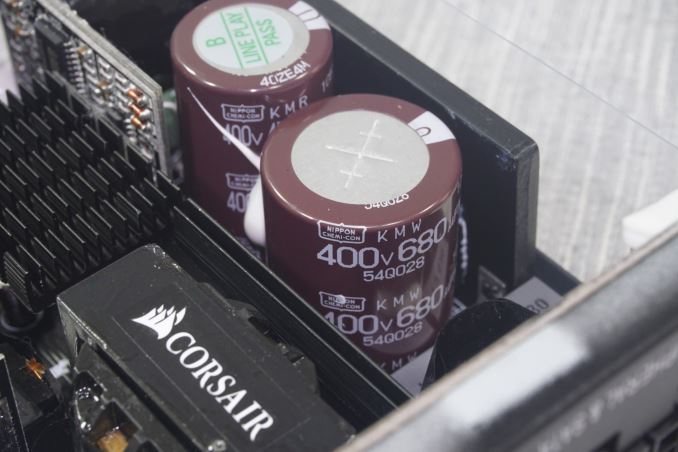
Original Link: https://www.anandtech.com/show/9625/the-corsair-rmx-and-rmi-1000w-power-supply-review
The Corsair RM1000x and RM1000i 1000W Power Supply Review
by E. Fylladitakis on September 30, 2015 8:00 AM EST- Posted in
- Corsair
- Cases/Cooling/PSUs
- RM Series
- Corsair Link
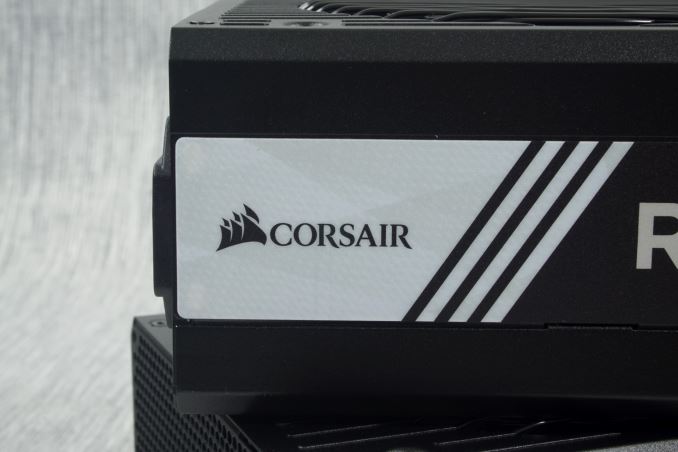
Corsair might have started off as a computer memory manufacturer, but today they sell a number of components for PCs. One of their most active product lineups is their computer power supply units (PSUs) business, with the company offering dozens of products through six different series. Each of their PSU series has been designed with a specific target group in mind, ranging from the low-cost VS series to the top-performance AX series. Amongst them, the RM series consists of units with modular cables that have been designed with low noise operation in mind.
We had our first take on the RM series one and a half year ago with the review of the RM1000, which was the pinnacle of the RM series at the time. A few months ago, Corsair upgraded the RM series, presenting the RM-i series that also featured Corsair's Link interface. This week, the company is further releasing the RM-x series, which are an upgrade of the original RM series, receiving essentially the same upgrade as the RM-i units but leaving out the Corsair Link support. Corsair has provided us with an RM1000i and an RM1000x for evaluation, both of which we will have a look at in this review.
| Power specifications ( Rated @ 50 °C ) | |||||
| AC INPUT | 100 - 240 VAC, 50 - 60 Hz | ||||
| RAIL | +3.3V | +5V | +12V | +5Vsb | -12V |
| MAX OUTPUT | 25A | 25A | 83.3A | 3A | 0.8A |
| 150W | 1000W | 15W | 9.6W | ||
| TOTAL | 1000W | ||||
Packaging and Bundle
Corsair supplies the RM1000i and the RM1000x into large, tough cardboard boxes. The packaging is virtually identical, with the only major difference being the main color, which is white for the former and black for the latter. A lot of information regarding the PSU has been printed on all sides of the box, in multiple languages.
The company kept the bundle simple, supplying only the standard AC power cable, a manual and four black mounting screws, as well as a case badge and a few cable ties.
Both of the new RM units comes with the same number of cables and connectors, with the exception of the extra internal USB cable that the -i variation has for the Corsair Link interface. The SATA/Molex cables are flat, ribbon-like cables, while the thicker ATX/EPS/PCI-E cables are sleeved. All of the wires are black.
The following table lists the number of connectors.
| Corsair RM1000x/RM1000i | ||
| Connector type | Hardwired | Modular |
| ATX 24 Pin | - | 1 |
| EPS 4+4 Pin | - | 2 |
| EPS 8 Pin | - | - |
| PCI-E 6+2 Pin | - | 8 |
| PCI-E 8 Pin | - | - |
| SATA | - | 12 |
| Molex | - | 11 |
| Floppy | - | 2 |
The Corsair RM1000i & RM1000x PSU - External Appearance
Physically, the RM1000i and RM1000x are nearly identical to each other. Their chassis is sprayed with a matte black color that is well applied and fingerprint-resistant. Further aesthetic improvements include chamfered side edges and side stickers with the model's number printed on them.
Another sticker can be found at the top of the chassis, with the electrical specifications of the unit. Both models are using the same 180mm long chassis. Note that this chassis is significantly longer than a standard ATX design (140mm) and may not fit into some designs, especially very compact layouts.
The front of the PSUs are littered with the numerous connectors for the modular cables. The number and type of connectors is identical, with the sole exception that the RM1000x lacks the Corsair Link interface connectors and the test button. There is a very basic legend printed beneath each group of connectors. Both the PCI-Express and the CPU 12V cables use the same connectors, the 6-pin connectors are for the SATA/Molex cables and the split 10+18 connector is for the 24-pin ATX cable.
The Corsair RM1000i & RM1000x PSU - Internal Design
The 135mm fan responsible for the cooling of the RM1000i and the RM1000x is a Corsair NR135P fan. As even the UL certification number points back to Corsair, this technically is Corsair's own unique product and not a re-branded fan, though it's a safe bet that ultimately some hereto-unknown Chinese factory still makes it for them. It has a FDB bearing and a maximum speed of about 1500 RPM. At this point we should note that both of the units feature a "zero-RPM fan mode", meaning that the fan will not start before the load is significant and component temperatures will require active cooling.
Both the RM1000i and the RM1000x are virtually identical on the inside as well, with the mere difference being the RM1000x lacking the circuitry related to the Corsair Link interface. The OEM behind their creation is Channel Well Technologies (CWT) and both units actually are an upgrade of the design that the RM1000 was based upon.
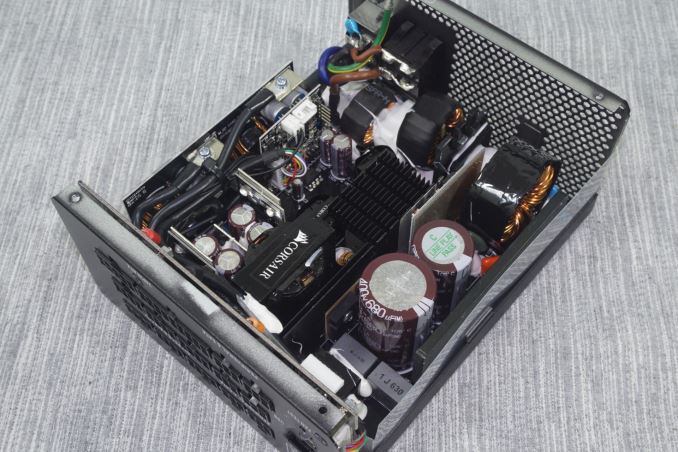
RM1000i (left) & RM1000x (right)
The first notable upgrade is the heatsinks. The heatsinks of the RM1000 were preposterously small for a PSU with that kind of output and rightfully Corsair thought that they would be a good place to start upgrading. Most of their focus was placed on the heatsink cooling the transistors at the primary side of the transformer, which is a huge upgrade over the small solid block of metal we saw in the original RM1000. The heatsink holding the APFC diode and transistors is still a solid block but it is a little longer.
The second upgrade is the sizing and the quality of the components. At the primary side, the APFC capacitors are still supplied by Nippon Chemi-Con but they are one 680μF and one 470μF capacitor, for a whopping total capacitance of 1150μF. The original RM1000 had two 390μF capacitors instead. Note that the capacitors of the RM1000i and the RM1000x may look physically different, but they actually are identical (KMR vs KMW series). Only their physical proportions differ and Corsair may be using either model depending on their availability. All of the secondary side capacitors, electrolytic and polymer alike, are now supplied by Nippon Chemi-Con as well, not TAICON and CapXon.
There are no sizable heatsinks at the secondary side of the transformer. The rectifying MOSFETs are being cooled by small metallic bars, some of which are being used as current distribution bars as well. Corsair is also using a lot of silicon glue throughout the unit, in an effort to enhance its mechanical cohesion. They seem to have placed a particular amount of effort to minimize electromagnetic vibration noise, or "coil whine", by placing a lot of glue on every inductor of the unit. They even wrapped the larger inductors with insulating material.
This vertical PCB is the only part that is notably different between the two units. Where the RM1000i has a microcontroller, the RM1000x is plain and shorted to follow only a core, pre-programmed thermal control set of instructions. The RM1000i's stock fan profile is identical but can be adjusted via the Corsair Link interface.
Cold Test Results
For the testing of PSUs, we are using high precision electronic loads with a maximum power draw of 2700 Watts, a Rigol DS5042M 40 MHz oscilloscope, an Extech 380803 power analyzer, two high precision UNI-T UT-325 digital thermometers, an Extech HD600 SPL meter, a self-designed hotbox and various other bits and parts. For a thorough explanation of our testing methodology and more details on our equipment, please refer to our How We Test PSUs - 2014 Pipeline post.
Note: As the RM1000i and the RM1000x are technically identical, their performance during our testing naturally was identical as well. As such, one set of results is displayed in this review for clarity.
The electrical efficiency of the RM1000i/RM1000x is very stable and easily meets the 80Plus Gold efficiency certification standards. In fact, the units went beyond 80Plus Gold and reached 80Plus Platinum efficiency standards during our testing. However, that level is efficiency is was reached using a 230VAC input, therefore the 115VAC input used for 80Plus compliance testing could drop the efficiency below the 80Plus Platinum limits at 50% or 100% load.
The units have a maximum conversion efficiency of 92.8% at 50% load and an average of 91.8% within the nominal load range (20% to 100% of the unit's capacity). It is worthwhile to mention that the older RM1000 had a higher peak efficiency at 50% load, but lower overall efficiency. Corsair also improved the low load efficiency in comparison to the RM1000, bringing it up to 87.8% at 10% load and 80.1% at 5% load.
With the RM1000i/RM1000x operating outside our hotbox, the load had to reach 560 Watts before the fan even started spinning. The thermal performance of the newer models is clearly superior to that of the original RM1000 and astonishing for PSUs with that kind of power output, especially at lower loadings, where the fan is still not spinning. Once the fan starts, it remains practically inaudible. As the load increases however, the fan's speed will increase to meet the increasing cooling demands. The fan becomes clearly audible when the load is greater than about 800 Watts.
Hot Test Results
Moving on to our hot test results, as the following tables show, the power quality of the RM1000i/RM1000x is significantly upgraded in comparison with the original RM1000. The maximum voltage ripple on the 12V line is now 28 mV, less than half that of the previous model and four times below the 120 mV design limit. Similar performance improvements can be seen on the minor voltage rails as well, with the maximum ripple of the 3.3V and 5V lines being 10 mV and 20 mV respectively. Voltage regulation is greatly improved too, as the RM1000i/RM1000x maintain all of their voltage lines within about 1% across the entire nominal load range. In comparison, the voltage regulation of the RM1000 was between 2% and 3%.
| Main Output | ||||||||
| Load (Watts) | 202.31 W | 503.64 W | 752.79 W | 1000.53 W | ||||
| Load (Percent) | 20.23% | 50.36% | 75.28% | 100.05% | ||||
| Amperes | Volts | Amperes | Volts | Amperes | Volts | Amperes | Volts | |
| 3.3 V | 2.27 | 3.37 | 5.66 | 3.36 | 8.5 | 3.34 | 11.33 | 3.33 |
| 5 V | 2.27 | 5.13 | 5.66 | 5.12 | 8.5 | 5.09 | 11.33 | 5.08 |
| 12 V | 15.1 | 12.12 | 37.75 | 12.07 | 56.62 | 12.03 | 75.5 | 11.99 |
| Line | Regulation (20% to 100% load) |
Voltage Ripple (mV) | |||||
| 20% Load | 50% Load | 75% Load | 100% Load | CL1 12V |
CL2 3.3V + 5V |
||
| 3.3V | 0.95% | 6 | 6 | 8 | 10 | 8 | 16 |
| 5V | 0.8% | 8 | 12 | 16 | 20 | 12 | 22 |
| 12V | 1.05% | 12 | 16 | 22 | 28 | 26 | 14 |
The electrical performance of the RM1000i/RM1000x seems largely unaffected by the high ambient temperature. This is not unexpected from PSUs rated at 50°C and designed capable to operate without a fan. The average efficiency drop across the entire load range is 0.5%, evenly distributed across it. Technically, the RM1000i/RM1000x meet the 80Plus Gold certification limits even with ambient temperatures greater than 45°C.
Inside our hotbox, the fan began spinning as soon as the load reached 400 Watts. Still, the fan did not further speed up until the load exceeded 700 Watts, and beyond that the maximum speed did not go much higher than what we saw in our our room temperature testing, maintaining very low sound pressure levels. The internal temperatures remain relatively low, considering the high ambient temperatures, and are noticeably lower than the original RM1000 as well. However, we should mention that the original RM1000 had slightly lower noise figures under maximum load, indicating that the cooling profile of the newer RM1000i/RM1000x units is a little more aggressive.
Conclusion
With Corsair placing a lot of emphasis within their business operations on their PSUs, it is no surprise that they are constantly releasing new models and upgrading their old ones. The RM series is focused on providing high performance while maintaining the lowest possible noise levels. In our review of the original RM1000, the PSU did manage to maintain outstandingly low noise levels, but there were certain shortcomings. The electrical performance was not on par with other advanced units and the small heatsinks resulted to relatively high temperatures, even under low loads. Furthermore, the use of components from not highly reputable manufacturers was criticized.
One year later, Corsair fixed all of these shortcomings, greatly improving the performance and the quality of the new RM-i and RM-x series units. All of the capacitors are now supplied by one Japanese manufacturer, Nippon Chemi-Con. They significantly increased the heatsink mass, resulting to lower operating temperatures, especially while the fan is not spinning. The lower operating temperatures allow the PSU to perform more efficiently and output more power, which is why Corsair increased the specification temperature to 50°C from 40°C. Furthermore, the electrical performance is impressively better, reducing voltage ripple and improving regulation by more than 50%. Finally, with the latest update Corsair also increased the warranty period from five to seven years.
As for the differences between the RM1000i and RM1000x, there is just one: the Corsair Link interface. Other than that, the two units are indistinguishable from each other and their performance is identical as well. The RM1000i currently retails for $189 including shipping and the RM1000x, according to their MSRP pricing, should be retailing for $20 less.
Is the Corsair Link interface worth the extra $20? Well, it depends on the user, their needs, and to some extent whether they have multiple Corsair Link compatible devices installed to help spread the cost over multiple components. The Corsair Link software is fairly versatile and can be used to monitor vital figures such as temperatures, fan speeds, and in the case of power supply units, voltages and currents. For example, as can be seen in the figure below, the power input/output of the PSU and the individual voltage/current readings of each rail can be monitored in real time and logged as well. By default, the Corsair Link will not interfere with the standard protection circuitry of the PSU, even if the PSU is overloaded, as in the following example. The OPP (over power protection) will shut down the PSU instantly if the load is too high in relation with the temperature of the PSU.
The Corsair Link feature also allows for the programming of thermal and safety profiles, allowing the user to create custom cooling profiles and initiate commands or warnings when certain thresholds have been exceeded. For example, certain fans can be set to turn off while the system is idling and start after a temperature exceeds a certain threshold. The Corsair Link does end up being very useful. but the truth is that the PSU will still work just fine without it. Therefore, it is up to the user to decide whether this extra flexibility and options are worth the extra $20 for them.
Ultimately there is no argument over whether the upgraded RM series models are significantly better than those presented one and a half year ago. The new models are of significantly greater quality, come with a longer warranty, and their power quality is significantly better, all the while their retail price is about the same as that of the first model. For those buyers who want a truly high performance PSU designed with low-noise operation in mind, the new RM1000 units are some of the best choices currently available.

